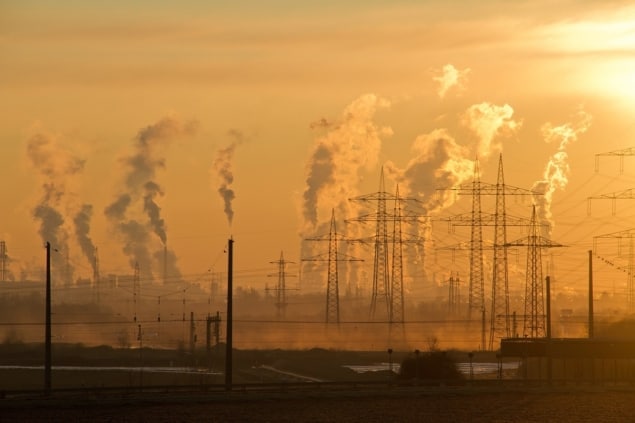
Warming experienced since the middle of the 20th century has been truly global with a geographic consistency not seen during any other period in the Common Era, which began 2000 years ago. This is the conclusion of an international team of researchers, who used an extensive range of climate proxies to map the regional and temporal scale of temperature changes over the last two millennia. The team showed that no climate trend prior to the current warming period has affected the entire planet simultaneously, and that historical temperature anomalies once assumed to have been worldwide affected different regions at different times.
The Roman Warm Period, the Dark Ages Cold Period and the Little Ice Age are some of the better known excursions from global mean temperatures that have occurred in the last two millennia. First identified from tree-ring data and other climate proxies in the northern mid-to-high latitudes, researchers initially expected to find the anomalies reflected in paleoclimate records across the globe. When evidence did come in from further afield, the data were noisy enough, and the temporal boundaries blurred enough, for it all to be accommodated within the prevailing narrative of global-scale change.
“There’s a dominant paradigm in which [paleoclimate researchers] think, and it’s the climate epochs paradigm, in which there were globally coherent periods of cold and warm,” says Nathan Steiger of Columbia University in the US. Steiger, with Raphael Neukom of the University of Bern in Switzerland, and colleagues at Spain’s University of Murcia, MathWorks in the US and the Bjerknes Center for Climate Research Norway, tested whether this paradigm holds for the Common Era.
Using a community-sourced database of climate records spanning all of the Earth’s continents and oceans, the team reconstructed annual temperatures over a global five-degree grid for the period AD 1–2000. The lack of any strong, universal influence on climate in the pre-industrial period was immediately obvious: virtually every single year up to 1850 saw at least a tenth of the Earth’s area experiencing above-average temperatures, while at least the same fraction experienced below-average temperatures.
Strictly regional phenomena
Familiar climate epochs like the Little Ice Age only emerged from the data when multidecadal average temperatures were taken, but even then, no single trend encompassed the whole of the planet at the same time. Instead, when the researchers plotted the timing of peak warming or cooling periods for each grid cell, they found that the climate events previously thought of as global epochs were strictly regional phenomena, consistent with natural climate variability.
“That stands in stark contrast to the contemporary warm period,” says Steiger, “where it really is very much globally coherent in a way that’s totally different from the global variability that happened prior to that over the past 2000 years”.
Steiger and colleagues describe their study in Nature.
In agreement with Steiger’s assessment, a second team (the PAGES 2k Consortium — which includes Neukom) reports in Nature Geoscience the result of a parallel analysis of the same data set. This group studied the rate at which global average temperature changed over multidecadal timescales and tried to identify the factors that drove such changes.
Volcanic eruptions
Prior to industrialization, they found that global temperature changes were influenced mainly by major volcanic eruptions, with greenhouse-gas forcing contributing a relatively minor signal. Solar output variability was not detectable in the multidecadal record.
Again, for the post-industrial period the picture was very different, with rates of warming since the mid-20th century exceeding anything seen in the preceding two millennia. “We see from the instrumental data and also from our reconstruction that, in the recent past, the warming rate clearly exceeds the natural warming rates that we calculate,” says Neukom.

Climate change brings extreme weather
Unusually warm or cold periods in the climate record are often seized upon by those who seek to deny the existence or downplay the consequences of anthropogenic climate change. After all, if temperatures varied so much before industrialization, why think that recent trends are anything extraordinary?
Although neither study investigated the specific drivers of recent warming, the fact that the current period stands apart in terms of both spatial coherence and warming rate still says something about this argument. As Neukom points out, many attribution studies have been performed over the last few decades, and the evidence all suggests that there are anthropogenic causes. “We do not explicitly test this; we can only show that natural causes are not sufficient to actually cause the spatial pattern and the warming rate that we observed.”
Bagikan Berita Ini














0 Response to "Global scale of Earth's recent warming is unique within the past 2000 years - physicsworld.com"
Post a Comment